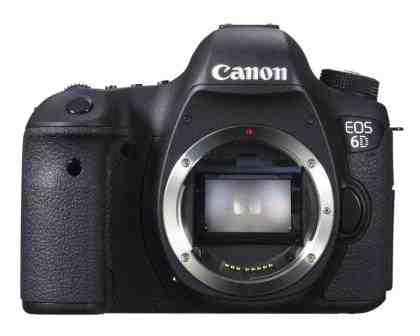The full-frame SLR market is really getting interesting, with news of a third new model in less than a week. Hot on the heels of the Sony Alpha A99 and Nikon D600 comes the Canon EOS 6D. It's presented as a more affordable option for people who want a full-frame SLR but can't stretch to the 5D Mark III. Pricing is yet to be announced, but with the 5D Mark III currently available for around £2,600 including VAT (body only), we're hoping that the 6D will come in at around £2,000.

The 20-megapixel sensor is brand new, and only a little lower in resolution than the 5D Mark III's 22.3-megapixel sensor. With the same 50-102,400 (expanded) ISO speed range and DIGIC 5+ processor inside, there's every reason to expect it to deliver the same stunning image quality that we saw from the 5D Mark III.

The autofocus system is much simpler, though, with just 11 autofocus points, only one of which is cross type for added sensitivity. Continuous shooting is slower, too, down from 6fps to 4.5fps, despite using the same processor. As such, the 5D Mark III looks like the better option for sports and wildlife photographers. Those who take candid portraits will want to weigh up their options carefully. For landscapes and most other types of photography, the autofocus system and 4.5fps performance should suffice perfectly well, but we'll be interested to see how it compares with the Nikon D600's 39-point autofocus and 5.5fps continuous mode.
The 3in screen is a little smaller than the 5D Mark III's 3.5in screen but it's just as detailed, with over a million dots. There's just a single SDXC slot and fewer controls than on the 5D Mark III. There's no mini joystick or button to rate photos, and the top plate lacks direct access to white balance and flash compensation controls. As with the 5D Mark III, there's no integrated flash.

It's not all about cut-down features, though. The body is splash- and dust-resistant, and the video mode looks, on paper, to be just as well specified. Meanwhile, the 6D adds two that are absent from the 5D Mark III. GPS is integrated for geo-tagging photos, and Wi-Fi allows remote control from – and wireless transfers to – a PC, Mac or smartphone. The EOS Remote app will be available soon from the Apple App Store and Google Play. Uploads to Facebook and YouTube, wireless printing to compatible Canon printers plus video and photo streaming will also be possible.

GPS and Wi-Fi are available as optional modules for the 5D Mark III, but with the GP-E2 GPS unit retailing for around £230 including VAT and the WFT-E7 Wi-Fi unit costing a terrifying £700, the 6D is shaping up to be an extremely attractive option for full-frame fans looking for a cheaper upgrade than the Mark III.






Leave a Reply